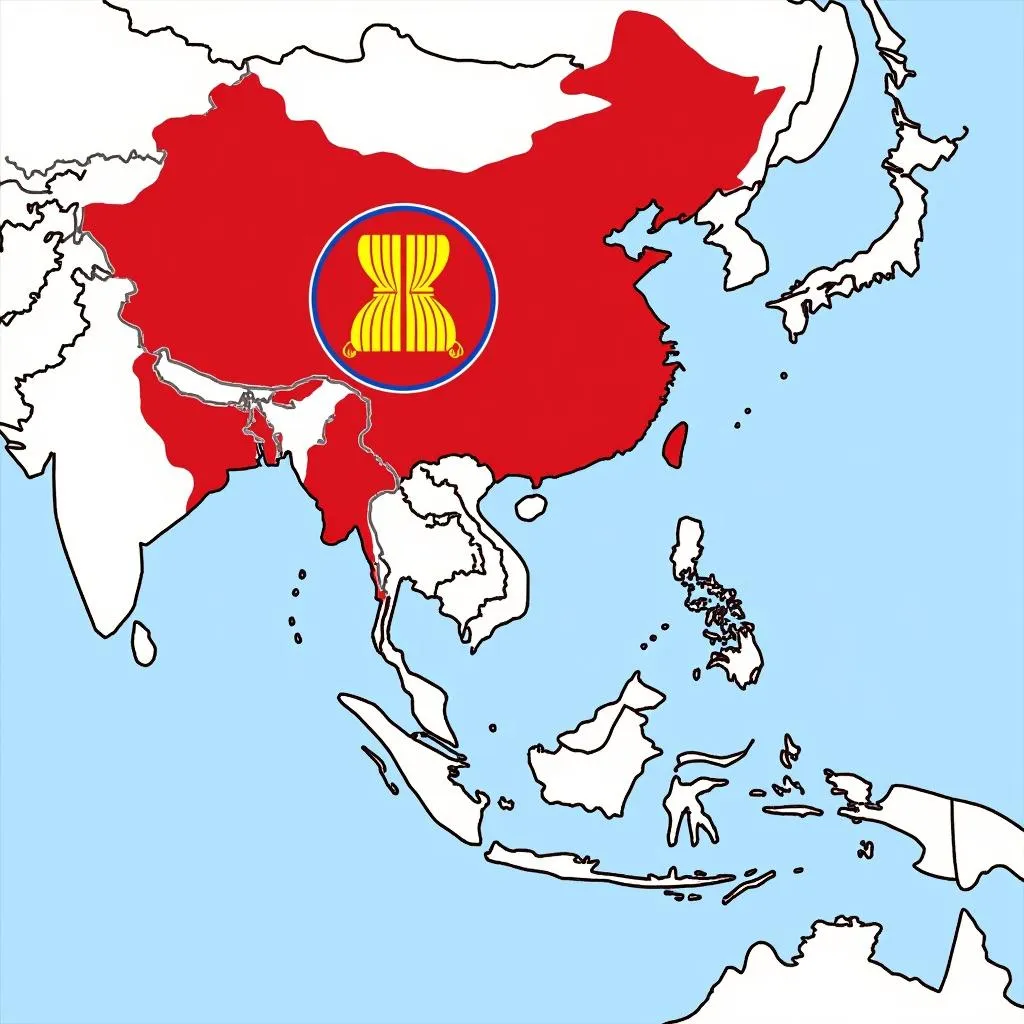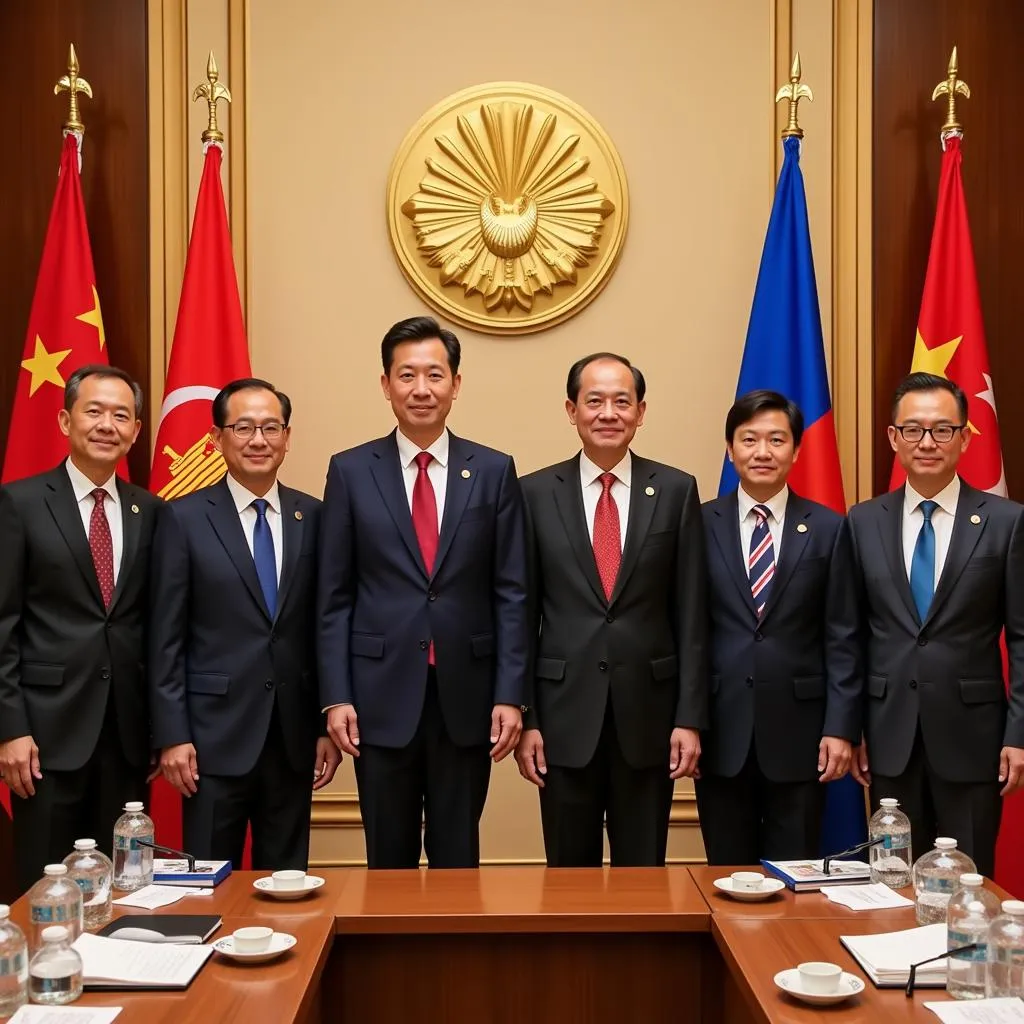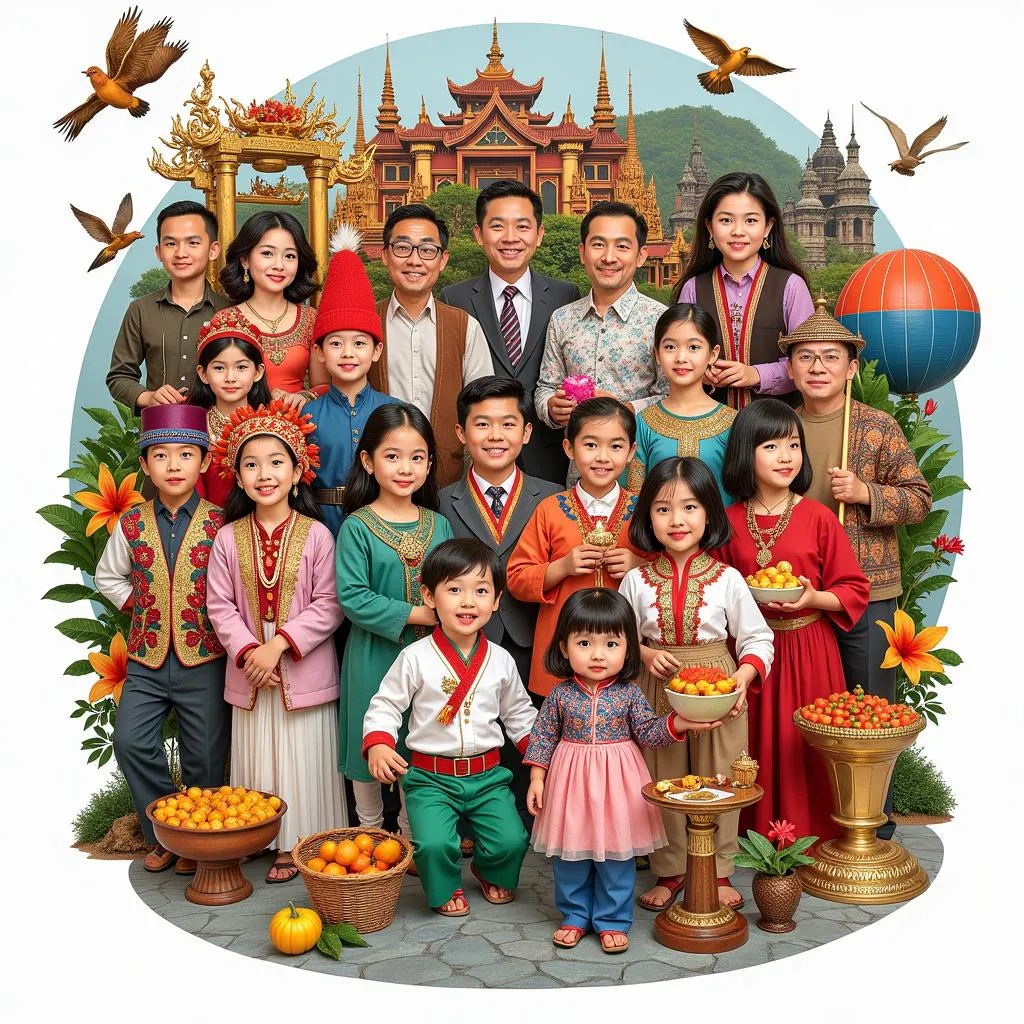The ASEAN acronym is frequently encountered in global news, economic reports, and discussions about Southeast Asia. But what does ASEAN stand for, and why is this organization so significant? This comprehensive guide delves into the meaning, history, and impact of ASEAN, shedding light on its role in fostering regional cooperation and development.
ASEAN: Deciphering the Acronym and Its Significance
ASEAN stands for the Association of Southeast Asian Nations, a political and economic union established on August 8, 1967. The organization comprises ten Southeast Asian countries:
- Brunei Darussalam
- Cambodia
- Indonesia
- Laos
- Malaysia
- Myanmar
- Philippines
- Singapore
- Thailand
- Vietnam
These nations, despite their diverse cultures, languages, and political systems, united with a shared vision: to accelerate economic growth, social progress, and cultural development through collaborative efforts.
 ASEAN Flag Map
ASEAN Flag Map
The Genesis of ASEAN: From Discord to Collaboration
The formation of ASEAN was not without its challenges. The region in the mid-20th century was marred by political tensions, ideological conflicts, and lingering effects of colonialism. However, recognizing the need for unity and cooperation, the founding members – Indonesia, Malaysia, the Philippines, Singapore, and Thailand – signed the ASEAN Declaration (also known as the Bangkok Declaration), laying the groundwork for a new era of regional cooperation.
Pillars of ASEAN: The Foundation of a Thriving Region
ASEAN’s overarching goals are realized through three core pillars:
1. Political-Security Community: ASEAN strives to promote peace and stability in the region by encouraging dialogue, confidence-building measures, and conflict resolution mechanisms among member states.
2. Economic Community: A key objective is to establish ASEAN as a single market and production base, characterized by the free flow of goods, services, investment, and skilled labor.
3. Socio-Cultural Community: ASEAN acknowledges the importance of fostering a shared identity and promoting cultural exchange, people-to-people connectivity, and social development within the region.
 ASEAN Summit Leaders
ASEAN Summit Leaders
Impact of ASEAN: Transforming Southeast Asia
Over the decades, ASEAN has emerged as a driving force behind Southeast Asia’s remarkable transformation. The organization has played a pivotal role in:
- Boosting Economic Growth: The establishment of the ASEAN Free Trade Area (AFTA) and other economic initiatives have spurred trade, investment, and economic growth among member countries.
- Enhancing Regional Security: Through dialogue and cooperation, ASEAN has contributed to maintaining peace and stability in the region, addressing issues such as transnational crime and maritime security.
- Improving Living Standards: ASEAN’s focus on social development has led to improvements in healthcare, education, poverty reduction, and overall living standards for its citizens.
- Raising Global Profile: ASEAN has become an influential voice in the international arena, engaging in dialogue and cooperation with other countries and regional blocs.
ASEAN in the 21st Century: Navigating New Challenges
As ASEAN enters the second decade of the 21st century, it faces new and complex challenges, including:
- Geopolitical Rivalries: The rise of great power competition in the region poses challenges to ASEAN’s principle of non-interference and its ability to maintain regional stability.
- Economic Disparities: Addressing economic disparities among member states and ensuring inclusive growth remain key priorities for ASEAN.
- Non-Traditional Security Threats: ASEAN is grappling with emerging threats such as cybersecurity, climate change, and pandemics, which require collective action and innovative solutions.
 ASEAN Cultural Diversity
ASEAN Cultural Diversity
Conclusion: ASEAN – A Beacon of Hope and Progress
Despite the challenges, ASEAN remains a beacon of hope and progress for Southeast Asia. The organization’s commitment to dialogue, cooperation, and integration has fostered peace, stability, and prosperity in the region. As ASEAN navigates the complexities of the 21st century, its role in promoting regional cooperation and development will remain more critical than ever.